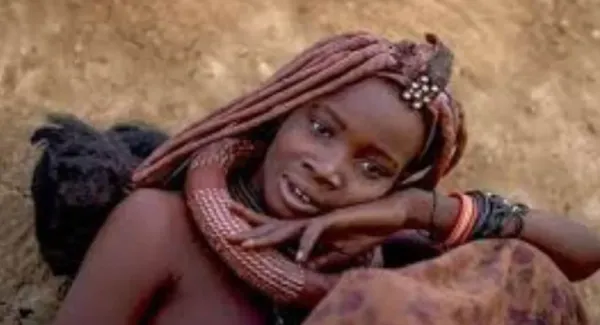
On the sandy earth of Kunain province of Namibia, situated in the southwest corner of Africa Himba women The world is world famous for its red color and unique customs. Every drop of water is revered in this semi -grated cattle rancular community; Bathing is as if it has become luxurious. Despite this Himba women Is called “the most beautiful women of Africa”. Their redness, adorned with jewelery and beyond bathing, the beauty has filled the human culture with surprise.
Himba women The traditions of the first centuries have gone, when the water was limited due to drought. The community used water to drink and keep it safe for animals and discovered baths. Then the birth of a cultural custom – otjize paste. This paste prepared from butter and red okar (hematite) is still Himba women The safety of the safety of the skin, which protects the skin from strong sunlight and insects, also gives beauty
Hematite okar is finely grinded and heated with butter. Ready thick paste Himba women Rubbing on the body and hair every morning. Scientific tests found that this paste can protect the skin from sunburn by reflecting ultraviolets and drives away flies away. In the local language, “otjize” is considered a symbol of life, earth and blood – this red color is their cultural jewel.
How can cleanliness when water is not found? Himba women This question was solved with “Smok Bath”. Aromatic Commiphora, the wood and herbs of the tree, they smoke on the coals, then sit in the smoke with a blanket. Sweating and aroma destroys skin bacteria together; This is daily ritual
Himba women Bal -western art is no less unique. Cowbakkari’s hair and thick braids made of soil, on which the red paste of otjize is indicated, shows social status. Unmarried adolescents keep two front brazed, the number of braids and jewelery changes after marriage.
Frankin Himba women Are identity Every jewelry means – Matinity, matrimonial status or gotra. This aesthetics converts their body into a “moving art”.
Today many cosmetic brands have launched products named “Red Skin Glow” and the source of inspiration is openly Himba women Tell us Social media influencers are describing it as ‘ethnic shine’ by making a reel of traditional Otjize‑ look. But Namibia government and cultural protection groups warn – “Such aesthetic” is appropriate only when the original culture is respected.
Rising temperature and irregular rainfall in desert areas Himba women Is creating new challenges for. Water sources are decreasing, the economy dependent on livestock is under pressure. The community says, “Our next generation can struggle to find the red soil required to maintain an otjize paste.”
The government of Namibia has promoted cultural tourism; Thousands of tourists every year Himba women Reach Kunain to imprison the camera. On the one hand, it gives economic benefits to the community, but on the other hand a crowd of photography has questioned their privacy.
Some scholars believe that continuously facing the camera Himba women She is wearing her traditional dress like “performance”; At the same time, many HimBA elders argue that external eyes cannot eradicate their culture, but are explaining the importance of red beauty to the world.
According to experts, otjize makes a protective layer on the skin, but chemists also warn that excessive hematite can cause microscopic erosion in the skin. It was seen in local medical camps that some Himba women There were breathing problems – due to the poisonous particles emanating from the smoke.
The Namibia government set up mobile schoolcamps in recent years, where Himba women And both men are getting basic education. This is opening the paths of health and alternative livelihood. However many Himba women Still hesitates to change the traditional lifestyle – they say, “This is our pride, it will be self -abandoned to abandon it.”
Story to water conservation, natural beauty and cultural roots Himba women Is of; It reminds us that beauty can also be free from water in many sense. Living in the balance of tradition and science Himba women The modern world challenges whether we can have as much value of our environment as they have been.